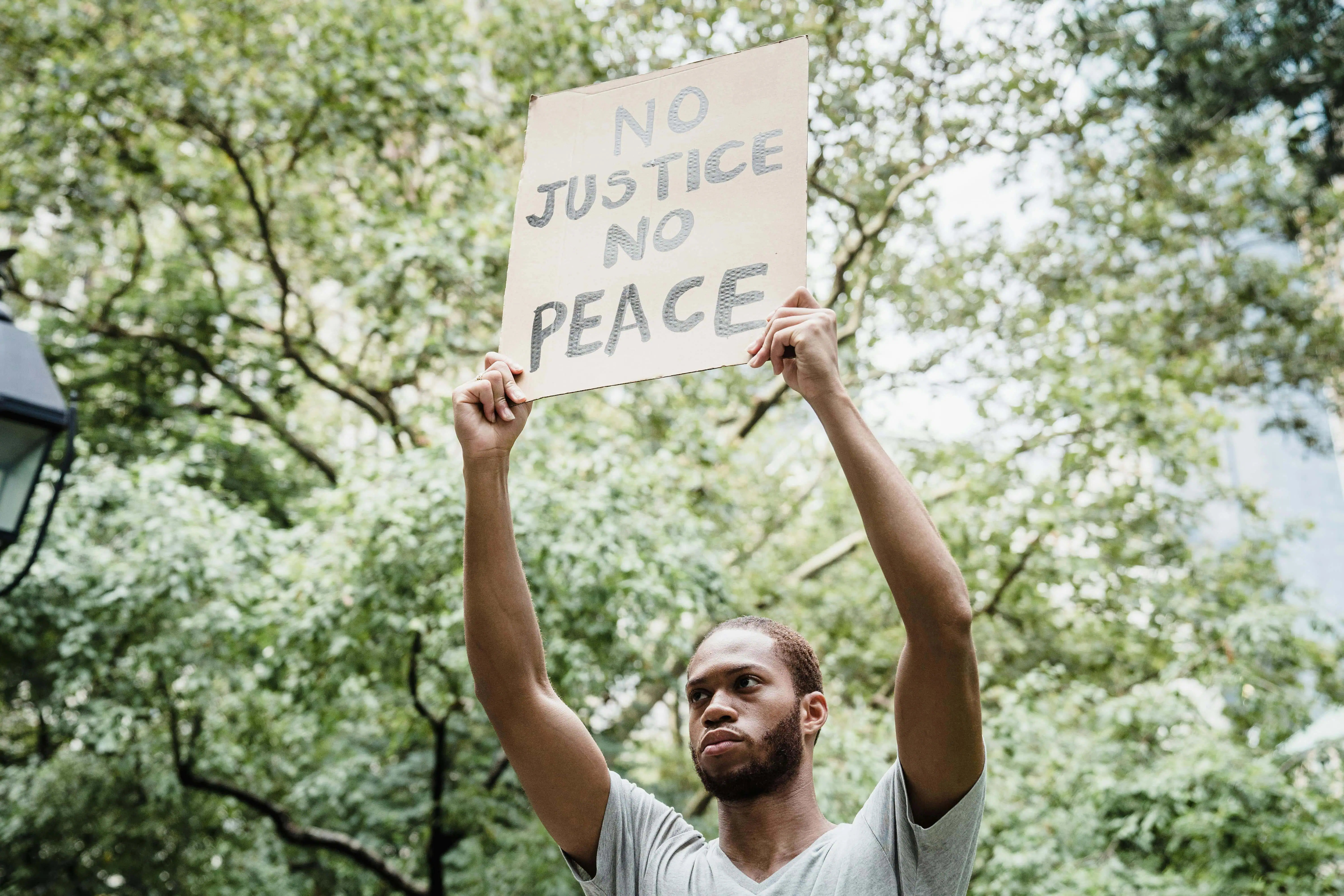Welcome to an insightful exploration of one of the most transformative periods in American history, the American Civil Rights Movement. This guide sheds light on the events, figures, and legislation shaping this pivotal era. Whether you’re a student, a job seeker, or simply curious about this transformative time, you’ll find valuable lessons and inspiration in the stories of courage and struggle that defined the movement.
Why This Matters
Understanding what the Civil Rights Movement was is essential for appreciating past sacrifices and grasping its ongoing impact on today’s society and workplaces. As we strive for equality and diversity in every sphere of life, the lessons learned from this time are as relevant as ever.
This guide invites you to journey through the history, challenges, and triumphs of the Civil Rights Movement. It aims to give you a deeper understanding of how far we have come and how far we still have to go in the fight for civil rights. Let’s delve into the past to better the future.
Understanding the Basics: What Is the Civil Rights Movement?
The Civil Rights Movement was a pivotal era in United States history, primarily occurring during the 1950s and 1960s. Its main goal was to end racial segregation and discrimination against African Americans and to secure legal recognition and federal protection of the citizenship rights enumerated in the Constitution and federal law.
Core Objectives
The movement sought to achieve several critical objectives, including:
- Desegregation of public schools and facilities
- Protection of voting rights
- Equal employment opportunities
- The abolition of Jim Crow laws
Key Methods of Advocacy
Advocates of civil rights used various methods to push for social and legal changes, including:
- Nonviolent protests
- Boycotts such as the famous Montgomery Bus Boycott
- Sit-ins at segregated lunch counters
- Marches, like the iconic March on Washington
A firm commitment to non-violence underpinned these tactics. They advocated for change in ways that avoided physical confrontations.
Significance in American History
Understanding what the Civil Rights Movement was is crucial in recognizing how it reshaped American society. The legal and societal changes it precipitated ended centuries of institutionalized discrimination, setting a precedent for future civil rights advocacy.
The Civil Rights Movement was not just about protests and legal battles; it was a profound transformation of the American social fabric, echoing the ongoing struggle for equality and justice in many aspects. The National Archives provides extensive resources on this significant part of history for more comprehensive insights.
Key Events That Shaped the Movement
The Civil Rights Movement is marked by several pivotal events that catalyzed change and highlighted the urgent need for reform. These events captured the nation’s attention and galvanized further support for the movement.
Milestone Incidents
Several key events stand out during the timeframe of the American Civil Rights Movement:
- Brown v. Board of Education (1954): This landmark Supreme Court case overturned Plessy v. Ferguson, declaring state laws establishing separate public schools for black and white students to be unconstitutional.
- The Little Rock Nine (1957): A group of African American students enrolled in Little Rock Central High School faced severe resistance and hostility in their endeavor to desegregate the school. Their courage became a symbol of the struggle for equal education rights.
- Birmingham Campaign (1963): This campaign is noted for its series of sit-ins, marches, and business boycotts in Birmingham, Alabama, which drew national attention to the harsh realities of segregation.
- The Selma to Montgomery marches (1965): These were three protest marches along the 54-mile highway from Selma, Alabama, to the state capital of Montgomery. They were monumental in leading to the passage of the Voting Rights Act of 1965.
Media’s Role
The extensive media coverage of these events played a crucial role in influencing public opinion and legislative action. The images of peaceful protests violently interrupted by police brutality shocked many Americans and international observers alike, leading to significant public support for the Civil Rights Movement.
Each of these events emphasized the systemic inequalities and spurred legislative and social changes in the U.S. For more information on how the media shaped public perception of these historic events, the Library of Congress Civil Rights History Project provides expansive resources and firsthand accounts.
Prominent Figures of the Civil Rights Movement
What is the Civil Rights Movement without its leaders? Several influential figures stood at the forefront, advocating for justice and equality.
Influential Leaders
Among these leaders were:
- Martin Luther King Jr.: Perhaps the most renowned figure, King’s approach of non-violence and profound speeches, like “I Have a Dream,” inspired millions.
- Rosa Parks: Her refusal to give up her bus seat was a catalyst for the Montgomery Bus Boycott, a pivotal event in the movement.
- Malcolm X: Known for his advocacy for the rights of black Americans, Malcolm X emphasized self-defense and the importance of a robust racial identity.
- Ella Baker: A key organizer and strategist, Baker promoted grassroots organizing and inspired the student activism movement.
Women’s Role in the Movement
The movement also saw significant contributions from women whose efforts are often unsung:
- Fannie Lou Hamer: A passionate advocate for voting rights, Hamer’s testimony at the National Democratic Convention highlighted the racial oppression in the South.
- Dorothy Height: Known for her leadership in the National Council of Negro Women, Height worked closely with civil rights leaders and focused on issues of inequality for women in the Civil Rights Movement.
These leaders, among others, significantly shaped the trajectory of the Civil Rights Movement and left a lasting legacy on American society. These individuals provided both leadership and moral direction, urging unity and resilience. The National Park Service’s page on Civil Rights provides more about their contributions.
The Impact on Legislation
The Civil Rights Movement transformed social attitudes and led to critical legislative gains that reshaped American law and governance. Significant acts were enacted to ensure equality and prevent discrimination.
Major Legal Changes
Legislative achievements include:
- Civil Rights Act of 1964: This landmark law prohibited discrimination based on race, color, religion, sex, or national origin. It aimed to end segregation in public places and banned employment discrimination.
- Voting Rights Act of 1965: Eliminated legal barriers at the state and local levels that prevented African Americans from exercising their right to vote under the 15th Amendment.
- Fair Housing Act of 1968: Prohibited discrimination concerning the sale, rental, and financing of housing based on race, religion, national origin, or sex.
Enforcement and Challenges
While these laws marked a significant legal shift, enforcement was difficult and often met with resistance. Implementation took years and required the perseverance of civil rights activists and the intervention of federal authorities.
These legislative victories were crucial in setting the foundations for further civil rights advancements and remain vital tools in the fight against racial inequality. Understanding the nuances of these laws helps us gauge how far we have come and how far we still have to go. The U.S. Department of Justice’s Civil Rights Division offers extensive resources and guides for a detailed exploration of these laws.
Beyond Legislation: Cultural and Social Influences
The Civil Rights Movement profoundly influenced American culture, enduringly impacting the arts, language, and interracial relations.
Cultural Shifts
The movement catalyzed significant shifts in how people communicated and interacted across racial lines. Key cultural influences include:
- Music and arts: Soul and jazz music voiced the struggles and hopes of the movement, with artists like Aretha Franklin and John Coltrane contributing to civil rights discourse.
- Literature and speeches: Works by authors like James Baldwin and Martin Luther King Jr.’s speeches were pivotal in understanding the era’s sentiments.
Social Changes
Integration efforts in public institutions led to increased social interactions among races. Over the decades, this cultivated a gradual but significant change in societal attitudes towards race and equality.
- Schools, universities, and workplaces saw growing diversity, impacting interpersonal relationships and cultural exchanges.
The influence extended globally, sparking movements for civil rights worldwide. Further readings and resources are available at the Smithsonian National Museum of American History.
Challenges and Controversies Throughout the Movement
The Civil Rights Movement, while crucial for advancements in equality, was not without its obstacles and disputes.
Internal Conflicts
Diverse strategies and ideologies among civil rights groups sometimes led to friction:
- Differing tactics: While some leaders advocated peaceful protest, others called for more militant actions.
- Organizational rivalries: Different groups also had to compete for funding, media attention, and public support.
External Resistance
Opposition from those resistant to change posed significant threats to the movement’s progress:
- Government backlash: Surveillance and intimidation from entities like the FBI aimed to undermine prominent leaders and activists.
- Public and private opposition: Segregationists in the South and across the nation conducted campaigns against desegregation efforts.
These challenges highlight the complexity of the struggle for civil rights and the resilience required to overcome them. They also emphasize the importance of unity and persistent advocacy in adversity.
Educational resources like those on the Teaching for Change website can offer deeper insights into these dynamics.
The Movement’s Legacy and Continuing Influence
The Civil Rights Movement has left a lasting imprint on the United States, shaping contemporary discussions on justice, equality, and civil rights.
Lasting Effects on Society
The movement’s influence is evident in numerous aspects of modern American life:
- Continued activism: Inspired by the successes and strategies of the past, new generations of activists advocate for social justice across various fronts.
- Policy reforms: The groundwork laid by the movement has paved the way for ongoing policy conversations and reforms concerning equity and inclusion.
Modern Movements
Today’s civil rights movements owe much to the strategies and moral visions of the 1960s:
- Organizations like Black Lives Matter continue to fight against racial injustice, drawing parallels to past struggles.
- The dialogue around civil rights has expanded to include issues of gender, sexuality, and immigration, reflecting a broader spectrum of advocacy.
This enduring legacy commemorates past victories and challenges current and future generations to continue the fight for fairness and justice. To explore how these historical movements correlate with ongoing issues, the Southern Poverty Law Center provides a comprehensive overview of current civil rights challenges and advocacy efforts.
FAQs
What was the Civil Rights Movement is a question that often sparks many questions. Here are some commonly asked ones with concise answers.
What triggered the Civil Rights Movement?
The movement was propelled by centuries of racial injustice and inequality experienced by African Americans. Events like the Montgomery Bus Boycott served as catalysts.
Who were the unsung heroes of the movement?
While leaders like Martin Luther King Jr. are well-known, countless others like Claudette Colvin and Septima Clark played crucial roles but received less recognition.
How did the movement affect other minority groups?
It set a precedent for other civil rights movements, inspiring groups such as women, Latino Americans, and, later, LGBTQ+ communities to seek similar reforms.
What were the significant oppositions to the movement?
Opposition came from segregationists who upheld Jim Crow laws and from differing ideologies within the movement itself, which sometimes clashed over tactics and goals.
Is the Civil Rights Movement still relevant today?
Yes, it remains highly relevant. It laid the groundwork for ongoing discussions and policies on equality and justice in American society, and modern movements continue to draw on its strategies and lessons.
How did children participate in the Civil Rights Movement?
Children were active participants, notably in events like the Children’s Crusade in 1963, where hundreds of school students marched and faced enforcement actions.
Did the Civil Rights Movement impact voting rights?
Yes, one of the movement’s significant triumphs was the Voting Rights Act of 1965, which prohibited racial discrimination in voting and fundamentally changed the political landscape in the U.S.
Were there similar movements outside the United States?
Absolutely. The Civil Rights Movement inspired numerous global movements for equality and justice, including anti-apartheid efforts in South Africa and civil rights movements in Northern Ireland.
How did the movement influence modern civil rights discussions?
The principles and tactics of the 1950s and 1960s civil rights activists underpin many modern movements, which continue to seek reforms in systemic issues like police brutality and immigration rights.
What are the ongoing challenges in achieving civil rights goals?
Despite past successes, challenges like racial profiling, wage inequality, and unequal access to healthcare persist, indicating the ongoing relevance and necessity of civil rights advocacy.
Conclusion
The Civil Rights Movement marks a monumental chapter in American history. Its extensive struggle for equality and justice across racial lines characterized it. This knowledge enriches our understanding of American history and emphasizes the need for continued advocacy and engagement.
Take Part in Advancing Equality
As we see the progress made and recognize the challenges that remain, it’s clear that the journey toward equality is far from over. By joining our diversity job board, you become part of a community committed to promoting diversity and inclusion in the workplace. Here, you can contribute to the positive change that the Civil Rights Movement pioneers envisioned and fought for.
We encourage ongoing dialogues, support diversity initiatives, and leverage your unique skills and perspectives to make a difference. Together, we can continue to shape a more equitable world!




